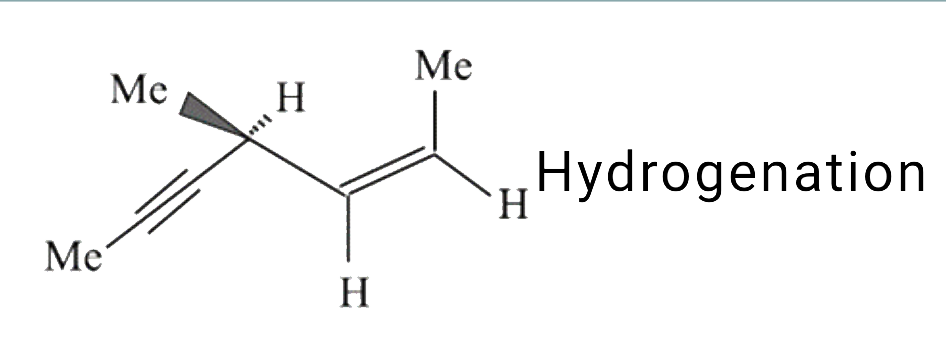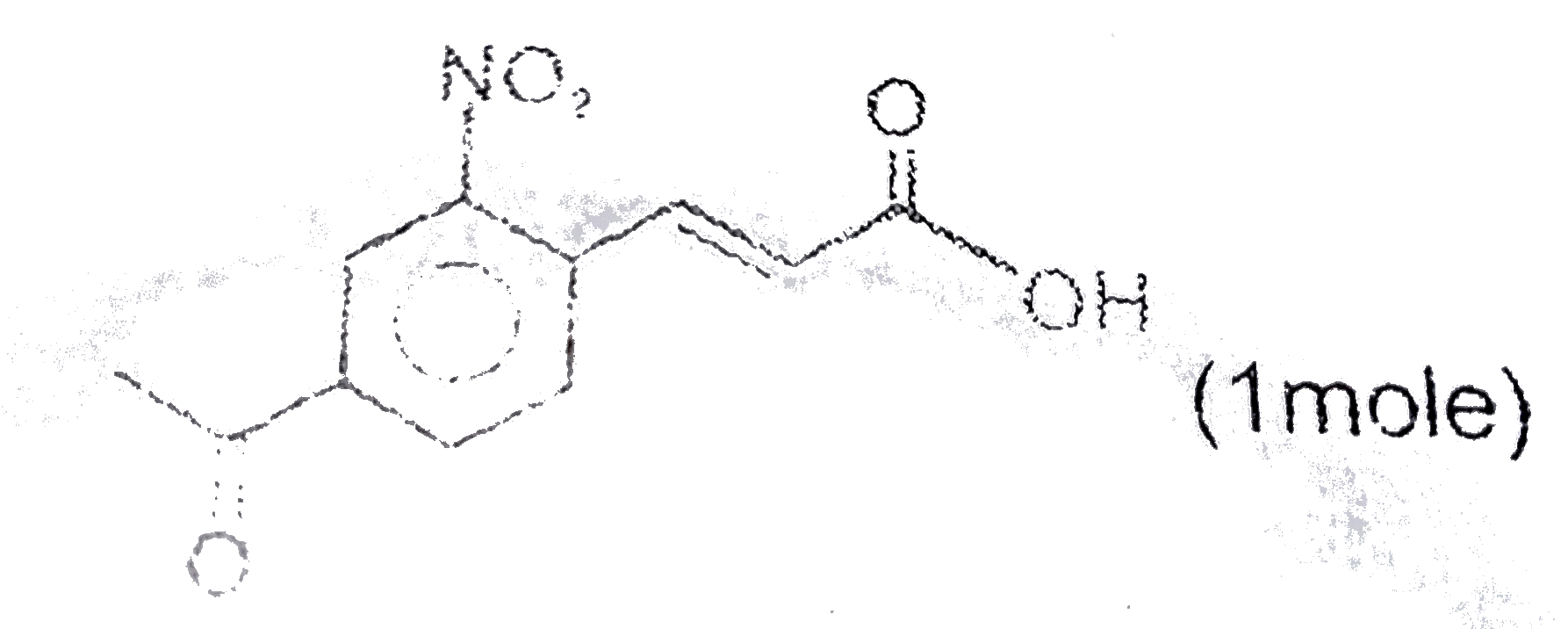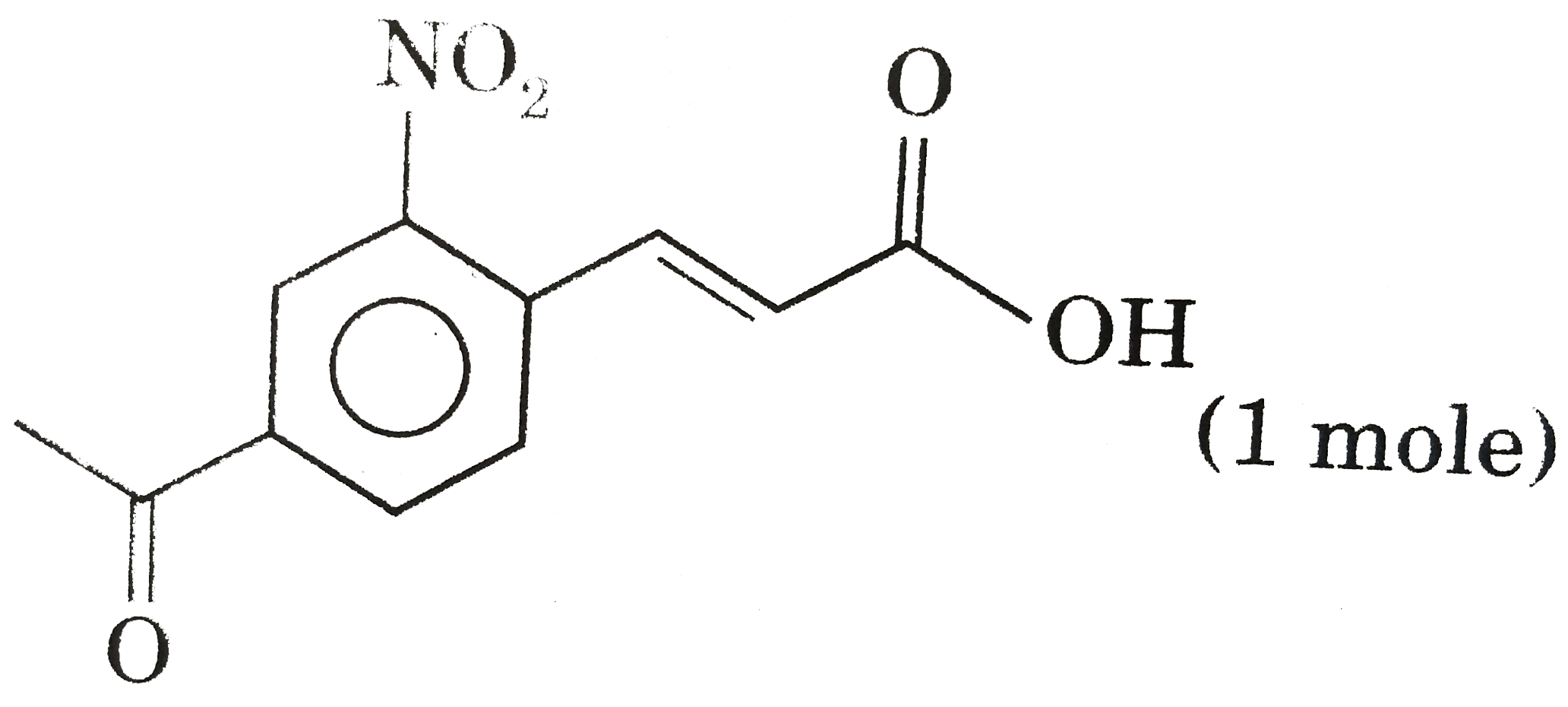An alkyl halide C5H11 (A) reacts with ethanolic KOH to give an alkene 'B' which reacts with Br2 to give a compound 'C' which on dehydromination gives an alkyne 'D' . On treatment with sodium metal in liquid ammonia one mole of 'D' give one mole of the sodium salt of 'D' and half a mole of hydrogen gas . Complete hydrogenation of 'D' yields a straight chain alkane. Identify A, B, C and D . Give the the reactions involved.
To solve the problem, we will identify the compounds A, B, C, and D step by step, along with the reactions involved.
Step 1: Identify Compound A
Given that A is an alkyl halide with the formula C5H11Br, we can deduce that it is a bromoalkane. A common structure for this compound could be 1-bromopentane (Br-CH2-CH2-CH2-CH3).
Step 2: Reaction of A with Ethanolic KOH
When 1-bromopentane (A) reacts with ethanolic KOH, an elimination reaction occurs, leading to the formation of an alkene (B) through dehydrohalogenation. The reaction can be represented as follows:
C5H11Br+KOH (ethanolic)→C5H10+HBr
Assuming the elimination occurs at the terminal position, we get pent-1-ene (B).
Step 3: Reaction of B with Br2
The alkene (B) then reacts with bromine (Br2) in a dibromination reaction, resulting in compound C. The reaction can be represented as:
C5H10+Br2→C5H10Br2
Assuming that the bromine adds across the double bond, we can deduce that compound C is 1,2-dibromopentane.
Step 4: Dehydrobromination of C to form D
Next, compound C undergoes dehydrobromination (removal of HBr) to form an alkyne (D). This can also be facilitated by ethanolic KOH:
C5H10Br2+KOH (ethanolic)→C5H8+HBr
Assuming the elimination occurs to form a terminal alkyne, we can deduce that compound D is 1-pentyne.
Step 5: Reaction of D with Sodium in Liquid Ammonia
When 1-pentyne (D) reacts with sodium metal in liquid ammonia, it forms the sodium salt of the alkyne and releases hydrogen gas:
C5H8+Na→C5H7Na+12H2
Step 6: Complete Hydrogenation of D
Finally, the complete hydrogenation of 1-pentyne (D) yields a straight-chain alkane:
C5H8+5H2→C5H12
This indicates that the alkane formed is pentane.
Summary of Compounds
- A: 1-bromopentane (C5H11Br)
- B: Pent-1-ene (C5H10)
- C: 1,2-dibromopentane (C5H10Br2)
- D: 1-pentyne (C5H8)
Reactions Involved
1. A to B:
C5H11Br+KOH (ethanolic)→C5H10+HBr
2. B to C:
C5H10+Br2→C5H10Br2
3. C to D:
C5H10Br2+KOH (ethanolic)→C5H8+HBr
4. D with Sodium:
C5H8+Na→C5H7Na+12H2
5. Hydrogenation of D:
C5H8+5H2→C5H12
Given that A is an alkyl halide with the formula C5H11Br, we can deduce that it is a bromoalkane. A common structure for this compound could be 1-bromopentane (Br-CH2-CH2-CH2-CH3).
When 1-bromopentane (A) reacts with ethanolic KOH, an elimination reaction occurs, leading to the formation of an alkene (B) through dehydrohalogenation. The reaction can be represented as follows:
The alkene (B) then reacts with bromine (Br2) in a dibromination reaction, resulting in compound C. The reaction can be represented as:
Next, compound C undergoes dehydrobromination (removal of HBr) to form an alkyne (D). This can also be facilitated by ethanolic KOH:
When 1-pentyne (D) reacts with sodium metal in liquid ammonia, it forms the sodium salt of the alkyne and releases hydrogen gas:
Finally, the complete hydrogenation of 1-pentyne (D) yields a straight-chain alkane:
- A: 1-bromopentane (C5H11Br)
- B: Pent-1-ene (C5H10)
- C: 1,2-dibromopentane (C5H10Br2)
- D: 1-pentyne (C5H8)
1. A to B:
C5H11Br+KOH (ethanolic)→C5H10+HBr
2. B to C:
C5H10+Br2→C5H10Br2
C5H10Br2+KOH (ethanolic)→C5H8+HBr
C5H8+Na→C5H7Na+12H2
C5H8+5H2→C5H12
Topper's Solved these Questions
Similar Questions
An alkyl halide C5H11 (A) reacts with ethanolic KOH to give an alkene 'B' which reacts with Br2 to give a compound 'C' which on dehydromination gives an alkyne 'D' . On treatment with sodium metal in liquid ammonia one mole of 'D' give one mole of the sodium salt of 'D' and half a mole of hydrogen gas . Complete hydrogenation of 'D' yields a straight chain alkane. Identify A, B, C and D . Give the the reactions involved.
View SolutionPrimary alkyl halide C4H9Br (A) is reacted with alcoholic KOH to give compound (B). The ompound (B) is reacted with HBr to give (C) which is an isomer of compound (A). Write the structures of the compounds (A), (B) and (C).
View Solution
Knowledge Check
- Question 1 - Select One
Benzamide is reacted with sodium metal in
ethanol givesAAnilineBBenzyl amineCbenzoic acidDBenzaldehyde - Question 2 - Select One
 Hydrogenation of the above compound in the presence of sodium in liquid ammonia gives - AAn optically active compoundBAn optically inactive compoundCA racemic mixtureDA diastereomeric mixture
Hydrogenation of the above compound in the presence of sodium in liquid ammonia gives - AAn optically active compoundBAn optically inactive compoundCA racemic mixtureDA diastereomeric mixture - Question 3 - Select One
When one mole of the given compond reacts with sodium metal then how many moles of H2 gas will release ?
 A1 moleB1.5 moleC2 moleD0.5 mole
A1 moleB1.5 moleC2 moleD0.5 mole
An alkyl halide C4H9Br,[A] reacts with alcoholic KOH and formes an alkene [B] which reacts with bromine to give a dibromide [C]. The compound [C] is converted to a gas [D] upon reacting with sodalide. The gas when passed through ammoniacal silver nitrate solution, gives a white precipitate. give the structural formula of the compounds [A],[B],[C] and [D].
View SolutionA compound (A) of boron reacts with Nme3 to give an adduct (B) which on hydrolysis gives a compound (C) and hydrogen gas. Compound (C) is an acid. Identify the compounds A,B and C. give the reactions inovolved.
View SolutionPrimary alkyl halide C4H9Br (X) reacts with alc. KOH to give compound (Y). (Y) reacts with HBr to give compound (Z) which is an isomer of (X). When (X) reacts with Na metal it gives compound (P). (X), (Y), (Z) and (P) are
View SolutionAlkyl halides react with……reagents to give alkanes
View SolutionWhen one mole of the given compound reacts with sodium metal then how many moles of H2 gas will release ?
 View Solution
View Solution

